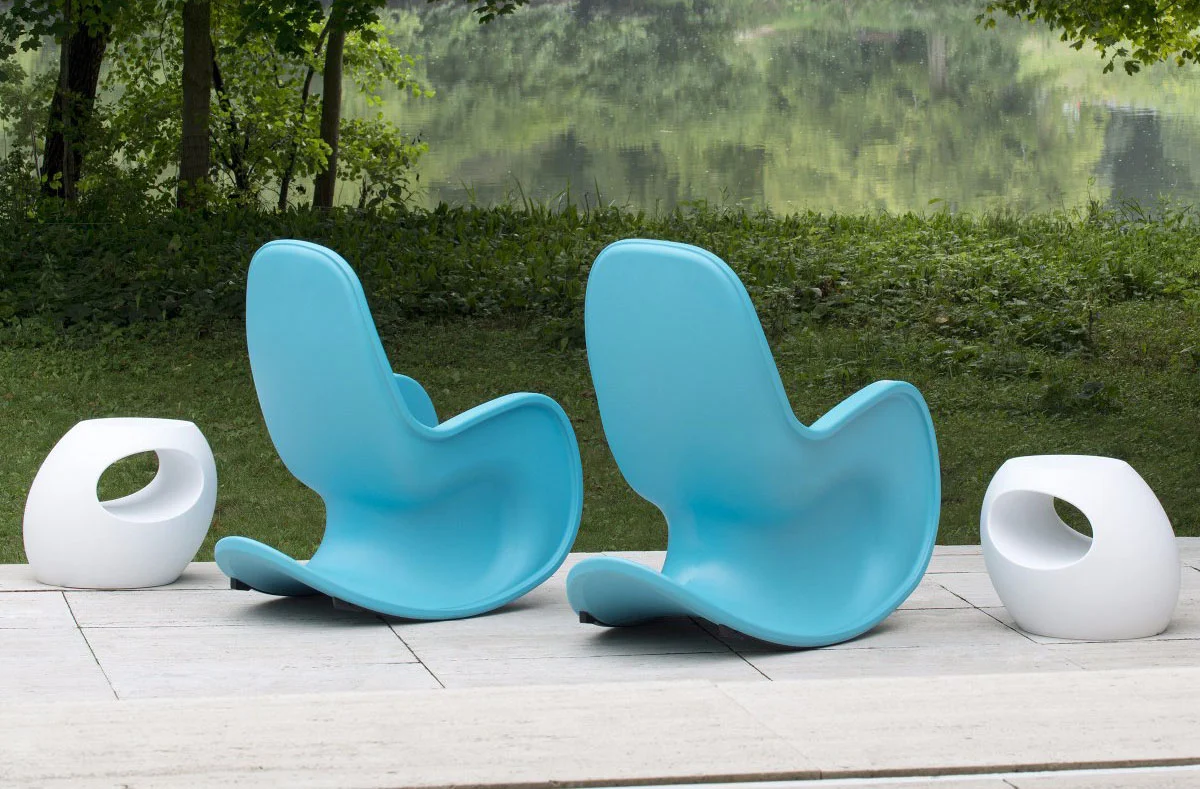Designing a next-gen rocking chair
Design careers have curious arcs. Having launched my design consultancy, 9INE, I found myself with a fantastic client, a long list of projects and the opportunity to help design a new concept for a rocking chair. I remember thinking at the time, how did this happen, I’m a digital designer? Rewinding a bit, I had made the recommendation to my furniture client that they find ways to inject new, innovative thinking into their culture. Easier said then done. However the leadership fully embraced it. An innovation competition was created and ideation workshops planned. There was a lot of energy around therapeutic furniture. Shortly after that a brief was written around designing a new rocking chair, from the ground up. The project was kicked off and it sat, like many projects in our industry, without clarity on next steps. And that’s when I connected with the engineering group and specifically a materials engineer.
Design has this notorious reputation for celebrating auteurs and not recognizing teams. The end of this story is that an inspiring rocking chair concept is in the marketplace and winning awards with a single designer’s name on it. The reality is that, like most design projects, there are dozens of people that contributed to the creation of this chair. Starting with the genesis of the project, the owner of the company should be recognized for identifying the need for a more innovative culture. The marketing director connected the right people to a strategic framework. And I can be included in this list as well. The facilitation of the ideation that put people in the right frame of mind to create new ideas is critical. But by no means does it end with me. The individual that made the leap to therapeutic furniture and the other that put forth the idea of a rocking chair, when there are dozens of rocking chair designs already in existence should be celebrated. The team that prioritized it as a greenlit project should be recognized, as well as the individuals that raised their hand and stated they wanted to work on it. Not to mention the president that took one look at the large model during production and rightly stated that it had a “fat ass” that needed to be trimmed. That only brings us to the beginning of the detailed design work and that’s where the materials engineer and I come in.
Following up with the individual project teams after the ideation, it was clear that the engineer working on the rocking chair design was seeking collaboration, so we had a series of discussions that lead to the idea of him and I sketching and molding basic forms prior to 3D design. Despite my digital pedigree I’ve always sketched. I’ve done so since I was a kid and plus I was trained in design thinking methodologies in design school. Together our sketches turned into clay forms. Clay forms turned into small 3D models. 3D models transformed into 3d printed models, which then large scale Styrofoam models were created from. Each step had dozens of variations and tweaks to the previous versions. As soon as we could view the design in full size and actually sit in it, we iterated back to sketching and 3D modeling. Eventually a materials and a production plan was identified. Prior to molds being created, the chosen design was sculpted out of wood at full size. The entire time that our collective creation was taking form, naming, branding, marketing, production plans and a sales approach took shape, each area had many individuals contributing to this new rocking chair’s creation.
Tonik furniture roll-out video, featuring Huey rocking chair towards the end
Someone smarter then me once said “a project’s natural tendency is to go to shit” and they’re absolutely right. Anyone that makes, designs, builds in any industry knows this to be true. It takes many individuals with different roles to push a project forward. And those same individuals all have a long list of other projects and personal crap in their lives that cause things to go astray. Projects need to be cultivated, nurtured, and tended to. Ideas are easy. Defining good ideas take a measure of discernment that can be learned. But making good ideas real is a whole ‘nother thing.
This rocking chair design was a white labeled. Which means it eventually ended up with two names and sold through two completely different furniture brands, albeit connected to each other. One of the brands, Tonik Furniture, was newly created with a focus on the hospitality industry.




